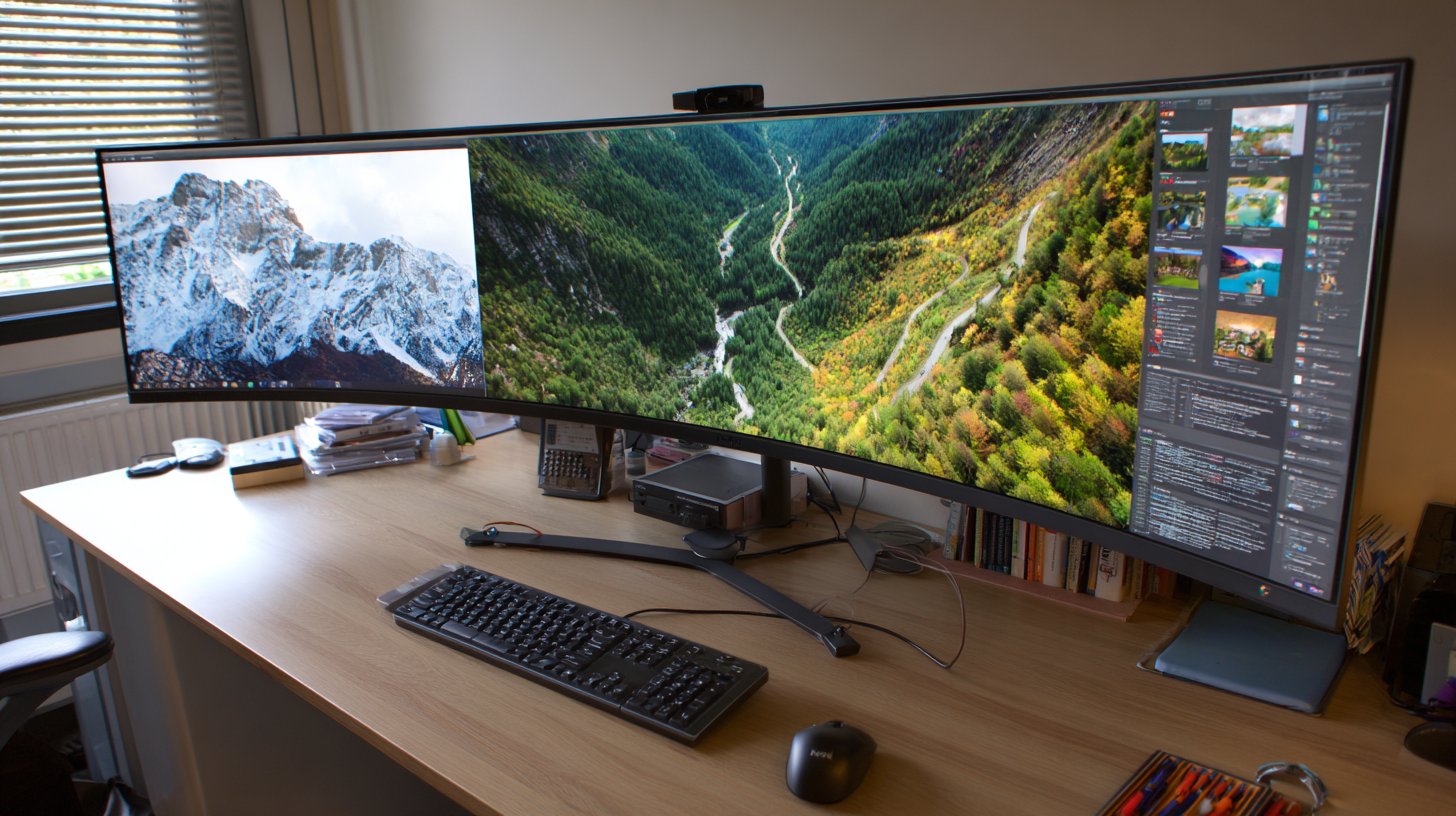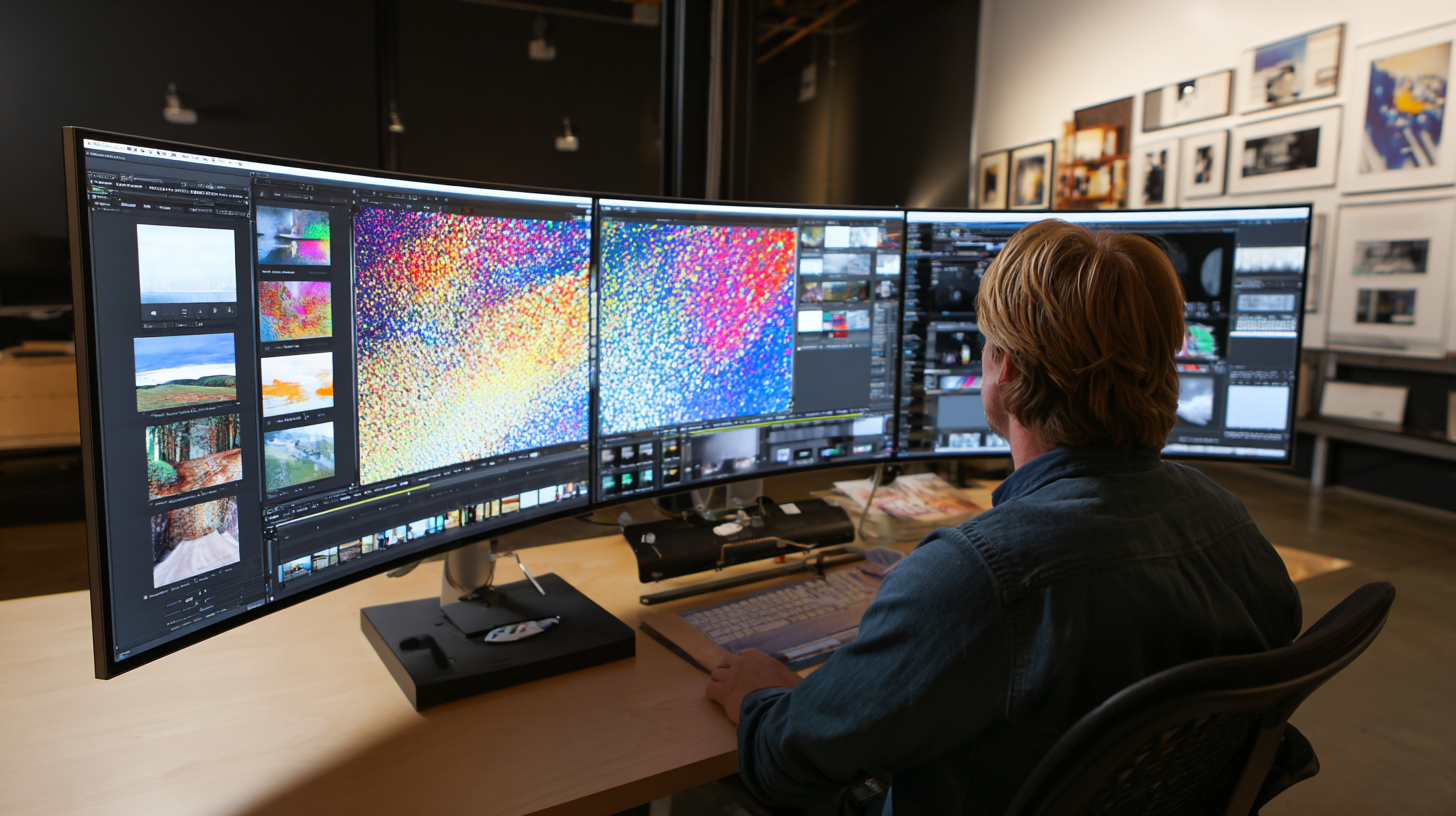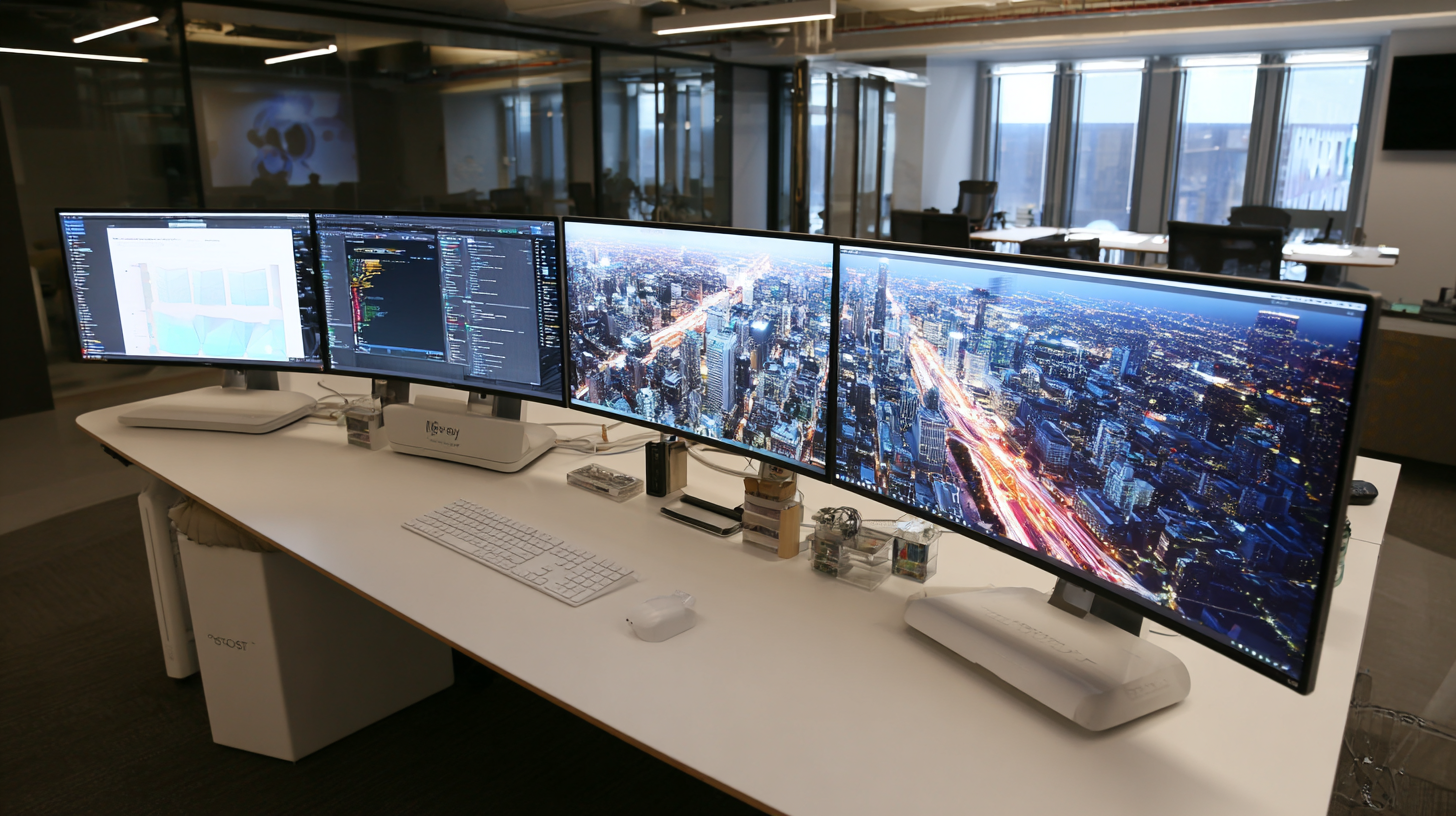Leave Your Message
- Phone
- E-mail
- Whatsapp


In the rapidly evolving landscape of display technology, the demand for curved monitors has surged, with the global market projected to reach USD 9.34 billion by 2025, growing at a CAGR of 7.9% (source: Market Research Future). A key innovation within this sector is the "Curved Monitor Vertical," which offers immersive viewing experiences while optimizing space and ergonomics.

These monitors are increasingly becoming essential in various fields, from gaming to professional design, due to their enhanced visual comfort and productivity advantages. As consumers seek to elevate their setup with cutting-edge technology, understanding the production standards that govern the development of these monitors is crucial.
This blog will delve into the vital checklist for ensuring the best quality in curved monitor vertical designs, emphasizing how adherence to these standards can significantly impact user experience and satisfaction.
Curved monitors have emerged as a game-changer in the world of visual technology, offering an unparalleled immersive experience for users across various industries. One of the most significant benefits of curved monitors is their ability to enhance depth perception. Unlike traditional flat screens, the curved design naturally follows the contours of the human eye, allowing for a more harmonious viewing angle that reduces distortion. This is particularly advantageous for gamers and designers who need precise detail and an expansive field of view to fully engage with their work or gaming environments.

Moreover, curved monitors provide improved comfort during prolonged use. The gentle curvature minimizes glare and reflections from ambient light sources, which can be distracting and fatiguing over time. This makes them ideal for extended sessions of work or leisure, as users can enjoy a more consistent screen experience. Additionally, curved displays can create a more natural, enveloping feeling that draws viewers into the onscreen action, enhancing emotional engagement and overall satisfaction. As technology continues to advance, curved monitors are setting new standards for visual excellence and user comfort.
Curved monitors have gained popularity in recent years, not just for gaming but also for improving productivity and comfort in work environments. The unique design of these monitors offers an ergonomic advantage, as the curvature aligns more closely with the natural shape of the human eye. This helps in reducing eye strain during prolonged use, making them an excellent choice for professionals who spend extended hours in front of screens. By providing a more immersive visual experience, curved monitors can also enhance concentration and reduce distractions, leading to increased productivity.

Tips for Choosing a Curved Monitor:
The benefits of curved monitors extend beyond eye comfort, offering a multitude of ergonomic qualities that support overall well-being while working or gaming.
When it comes to curved monitors, the aspect ratio plays a crucial role in enhancing multi-tasking capabilities. Traditional monitors typically feature a 16:9 aspect ratio, which can limit how much information is simultaneously visible on screen. In contrast, many modern curved monitors opt for wider ratios, such as 21:9 or even 32:9, providing a more immersive experience and allowing users to engage with multiple applications side by side without the need for additional screens.
The ergonomic design of curved monitors complements these wider aspect ratios by promoting a comfortable viewing experience. By wrapping the display around the user's field of vision, eyes experience less strain, making it easier to focus on various tasks. For professionals—such as graphic designers or financial analysts—who frequently juggle multiple windows or applications, the enhanced field of view offered by an ultra-wide curved monitor can significantly boost productivity. The ability to view multiple datasets or creative projects simultaneously creates a more streamlined workflow, exemplifying how the right aspect ratio can revolutionize the way we work and interact with our digital environment.
| Aspect Ratio | Screen Size (Inches) | Resolution | Curvature Radius (mm) | Refresh Rate (Hz) |
|---|---|---|---|---|
| 21:9 | 34 | 3440 x 1440 | 1800 | 144 |
| 16:9 | 27 | 2560 x 1440 | 3000 | 165 |
| 32:9 | 49 | 5120 x 1440 | 1800 | 240 |
| 21:9 | 38 | 3840 x 1600 | 2300 | 144 |
In the rapidly evolving world of display technology, color accuracy and contrast play a crucial role in enhancing the user experience, particularly in curved monitors. Recent reports from DisplayMate Technologies highlight that high-end curved displays can achieve color accuracy ratings as high as 99% sRGB and up to 95% DCI-P3, making them an excellent choice for graphic designers and gamers alike. This level of precision allows for more vibrant and lifelike visuals, making curved monitors not just a preference, but a necessity for professionals who seek the best in image quality.
Moreover, the contrast ratio in curved displays significantly impacts the viewing experience. According to data from International Display Research, premium curved monitors often boast contrast ratios exceeding 4000:1, compared to traditional flat screens which average around 1000:1. This higher contrast enables deeper blacks and brighter whites, thereby enhancing the overall depth and dimensionality of images. As users become more discerning about display performance, the emphasis on delivering superior color and contrast standards in curved monitors will likely drive further innovations in the industry.
The landscape of monitor design is evolving, especially with the rise of curved monitors that prioritize both ergonomics and aesthetics. Vertical design innovation in this realm not only enhances visual comfort but also elevates workspace aesthetics. Integrating curves into monitor design allows for a more immersive viewing experience, reducing eye strain while simultaneously demanding attention through its sleek and modern profile.
Tips: When selecting a curved monitor, consider the curvature radius. A gentler curve can create a more natural viewing experience. Additionally, adjust monitor height to align with your eye level, ensuring optimal posture during long working hours.
Moreover, the materials and finish of a monitor contribute significantly to its aesthetic appeal. High-quality finishes can enhance the overall look, making your workspace more inviting and stylish. Tips: Opt for monitors with adjustable stands that allow for customization in height and angle, ensuring that you not only achieve ergonomic benefits but also retain a polished, streamlined appearance that complements your personal style.
